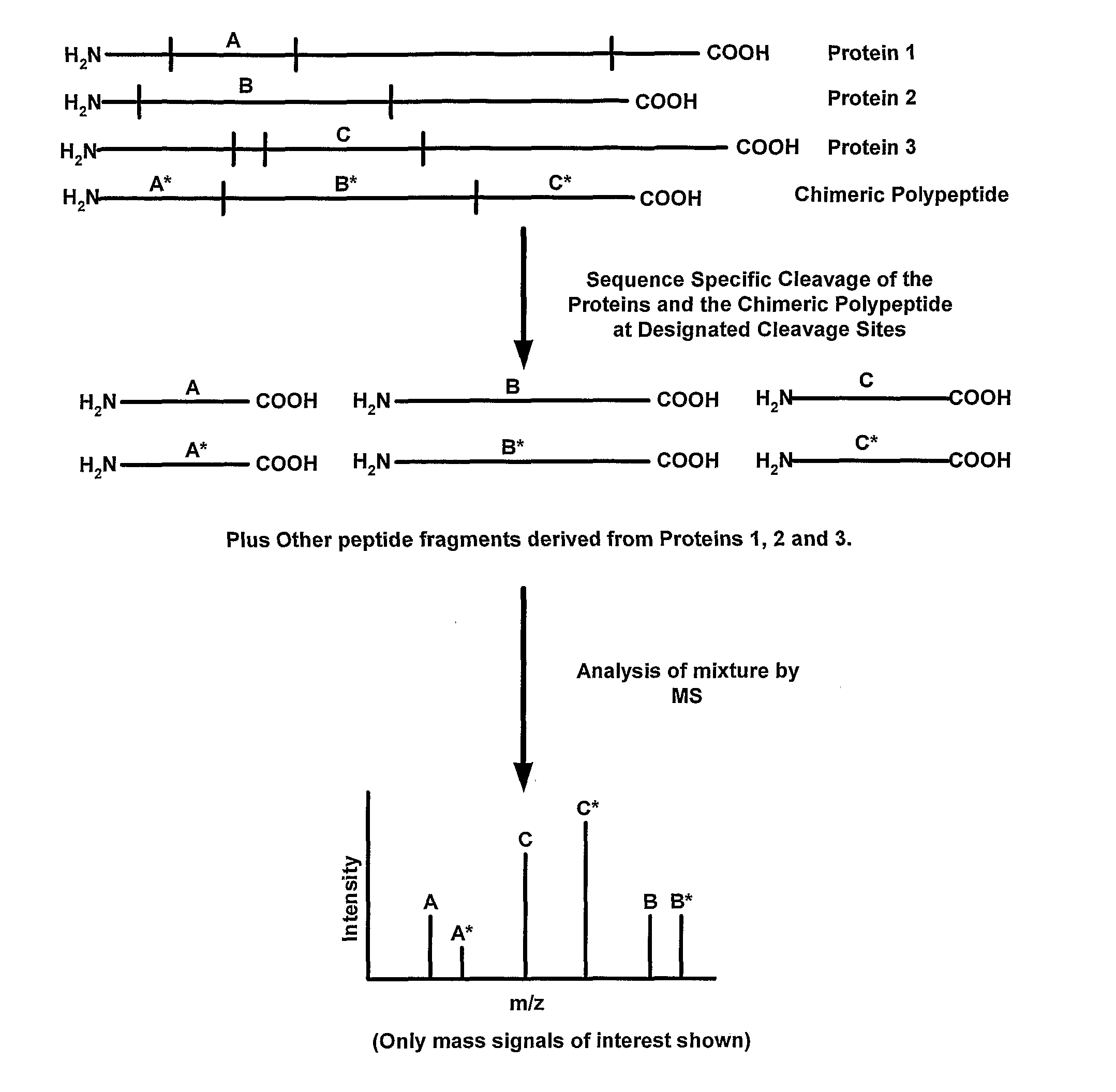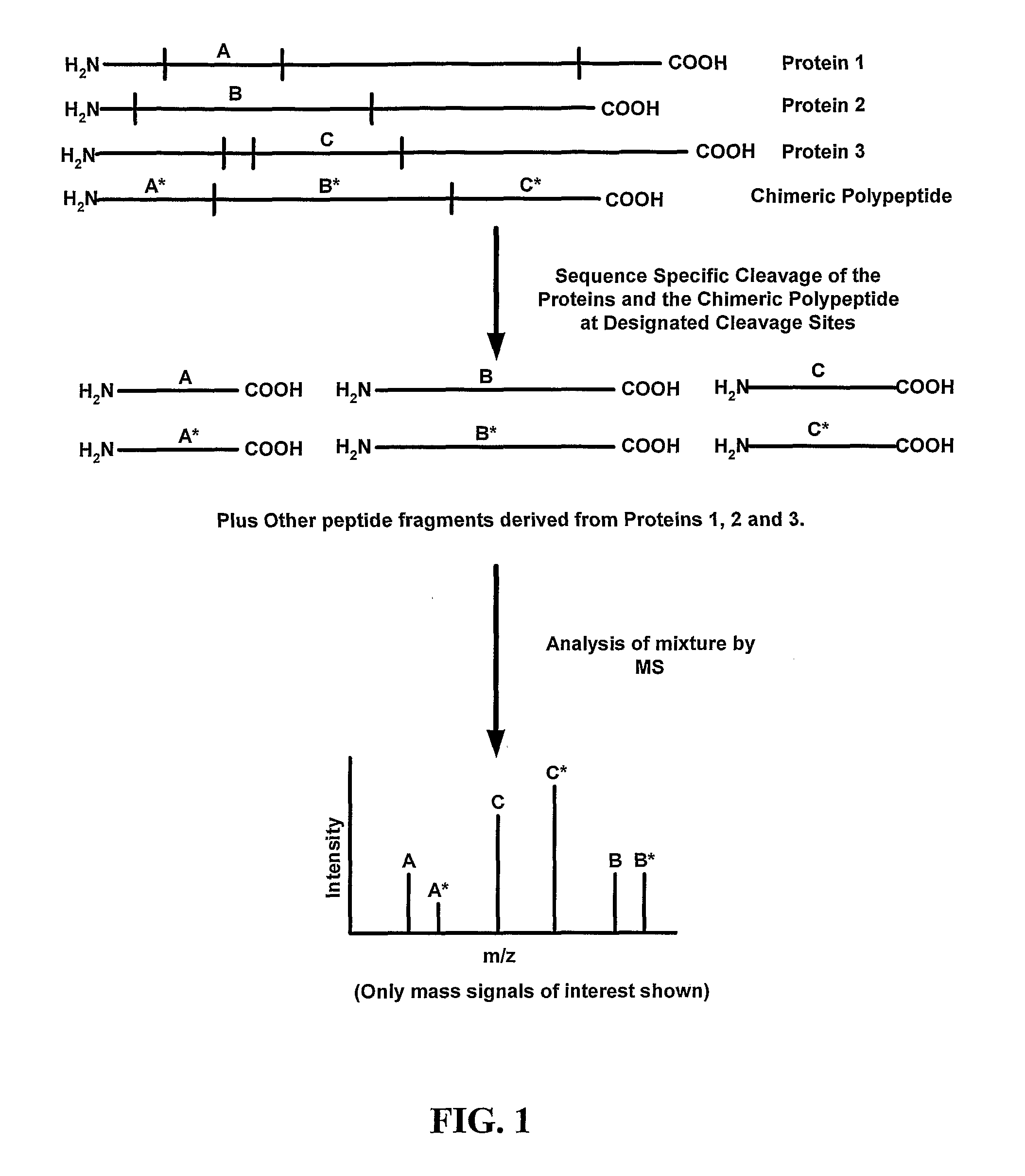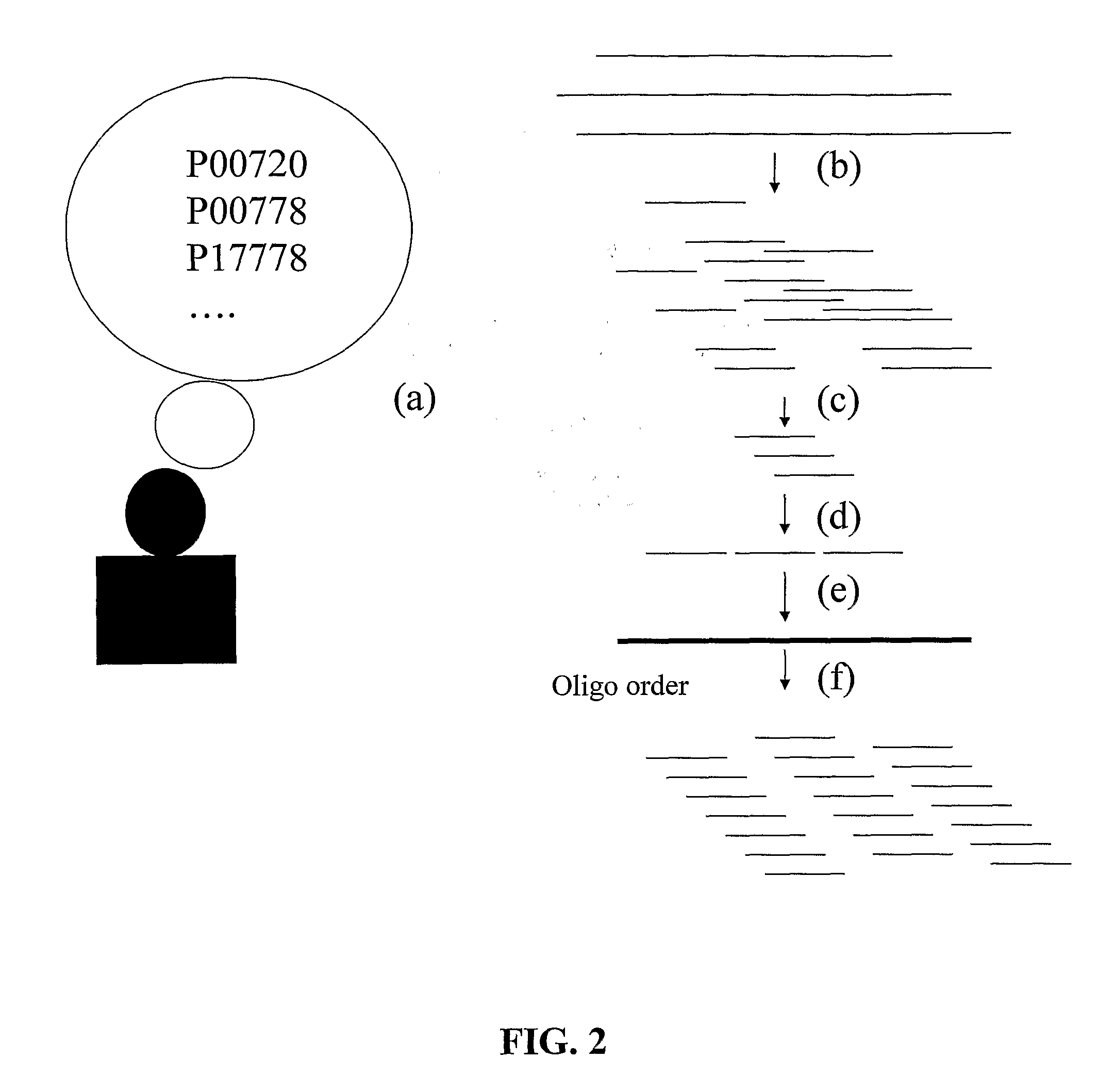Methods For Making And Using Mass Tag Standards For Quantitative Proteomics
a mass tag and proteomics technology, applied in the field of quantitative proteomics, can solve the problems of low throughput, limited success in direct expression of peptides in vivo, and no proteomic technology approaches the high-throughput and level of automation of genomic technology. achieve the effect of efficient production of peptide standards
- Summary
- Abstract
- Description
- Claims
- Application Information
AI Technical Summary
Benefits of technology
Problems solved by technology
Method used
Image
Examples
example 1
Isotopically-Labeled Peptide Standards for Quantitative Analysis of the Enzymes of the Purine Nucleotide Cycle
[0122] The purine nucleotide cycle is a metabolic cycle that is important for replenishing citric acid cycle intermediates and increasing ATP production in exercising muscle. The cycle also plays a central role in general purine metabolism. Three enzymes catalyze the reactions of the purine nucleotide cycle: adenylosuccinate synthetase, AMP deaminase and adenylosuccinate lyase. An imbalance in the enzymatic activities of these and other enzymes involved in purine metabolism has been implicated in the transformation and / or progression of cancer cells in the kidney, liver and colon (see, Weber, “Enzymes of Purine Metabolism in Cancer,”Clin. Biochem., 16: 57-63, 1983). In particular, it appears that the enzymatic activities of the anabolic enzymes such as adenylosuccinate synthetase, adenylosuccinate lyase and AMP deaminase increase in cancer cells. For example, the enzymatic ...
example 2
Absolute Quantitative MS-Analysis of the Enzymes of the Purine Nucleotide Cycle in Normal and Cancerous Kidney Cells
[0157] In this example, the chimeric polypeptide of Example 1 is used to determine whether a change in the absolute concentration of the enzymes of the purine nucleotide cycle is evident between normal and cancerous kidney cells. A needle biopsy is performed on a subject to obtain two kidney tissue samples. One of the samples is obtained from normal kidney tissue and the other is obtained from cancerous kidney tissue (for example, a tumor that is identified and located for biopsy by, for example, an imaging technique such as ultrasound, magnetic resonance imaging or computed tomography). The samples are subsequently treated and analyzed separately according to the following procedure.
[0158] The normal and cancerous kidney tissue samples are each cut into thin sections, frozen in liquid nitrogen, and ground in a mortar and pestle. A buffer, such as a RIPA buffer (150 ...
example 3
Selection of Protein Sets for a Single Chimeric Polypeptide
[0169] Mass tags for any number of particular different proteins may be combined to form a chimeric polypeptide (or a set of chimeric polypeptides). In some examples, the mass tags combined to form the chimeric polypeptide are selected based on a common property that they share, such as a grouping of target proteins that are to be spectroscopically analyzed. The mass tags, which may be one or more peptides that can be used to identify the different proteins of interest, are combined in a single chimeric polypeptide. The mass tags are generated by treatment of a protein of interest with a particular protein cleavage agent, and although it is possible to include multiple mass tags for a protein (such as generated by different protein cleavage agents) in a single chimeric polypeptide, each protein of interest will typically be represented by a single mass tag (which may be multiple peptides) in a single chimeric polypeptide. S...
PUM
 Login to View More
Login to View More Abstract
Description
Claims
Application Information
 Login to View More
Login to View More - R&D
- Intellectual Property
- Life Sciences
- Materials
- Tech Scout
- Unparalleled Data Quality
- Higher Quality Content
- 60% Fewer Hallucinations
Browse by: Latest US Patents, China's latest patents, Technical Efficacy Thesaurus, Application Domain, Technology Topic, Popular Technical Reports.
© 2025 PatSnap. All rights reserved.Legal|Privacy policy|Modern Slavery Act Transparency Statement|Sitemap|About US| Contact US: help@patsnap.com



